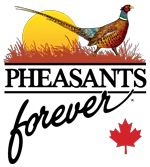A Year-round Conversation
By Craig Lester
Harvest is well underway in many parts of southern and central Alberta.
The dust is flying in the fields as farmers work to get their crops off, and while they are working day and night to get the crop into the bins, many are already thinking about next year and are taking the necessary steps to protect the soil’s health.
It starts by leaving ditches and public right-of-ways alone.
“Trespass farming” has become a significant issue in southern Alberta rural communities.
As farmers try to get a few more acres for their crops.
This approach to farming is threatening these last vestiges of intact habitat.
Saving the edges can also be beneficial to the health of your soil and crops for years to come if they are left intact.
Crop benefits
The benefits to next year’s crop from not cultivating the natural vegetation in the ditches and rights-of-ways are numerous.
- They filter excess nutrients, including phosphorous and nitrogen, preventing them from entering our rivers, lakes and groundwater systems.
- It helps minimize overland flooding by storing, slowing and absorbing excess water, helping to protect roads, culverts and agricultural fields.
- It can store thousands of tons of carbon, preventing it from entering the atmosphere.
- They provide homes for pollinators like bees, butterflies, moths and beetles.
- They sustain species that prey on agricultural pests.
- It provides thousands of acres of habitat for grassland-dependent mammals and birds, including pheasants and grey partridge.
Grazing right-of-ways
During the spring and fall, leaving right-of-ways and ditches alone plays an important role in the natural life cycle. It also presents a wonderful opportunity for grazing in late summer and fall.
As cattle producers know, grazing is a great way to manage the grass in the ditches and public right-of-ways.
As the livestock nipp off the grass, it opens up the canopy so more rain and sunlight actually get in and penetrate the soil, which can be very good for growth. It also creates different levels within the grass canopy, which provides habitat for birds to build nests and allows different types of insects to flourish.
Cattle hooves are a great way to rough up the soil without using equipment to completely break up the natural vegetation.
This increases soil contact with seeds, and it helps the seeds that are falling off these grass and plant species to help them properly germinate and grow.
Grazing the ditches and right-of-ways is important for vegetation management and in times of extreme drought.
So as the cattle come off the summer pasture, consider getting permission from the county or municipal district to graze these areas.
Everyone’s responsibility
The care of ditches and right-of-ways goes beyond the farmer.
It is equally important that the general public help when enjoying these beautiful rural areas.
Don’t litter and ensure you close gates behind you when you are out running the dogs, going for a bike ride or walk, or watching the beautiful birds.
Check back often at savetheedges.ca as we delve into many of the topics we have touched on above.
Save the Edges is bringing awareness of the issues of trespass farming and the values of intact roadside ditches and undeveloped public right-of-ways to southern Alberta’s landowners.
This summer and fall our focus will be continued communications and connecting with key counties and municipalities in southern Alberta.



